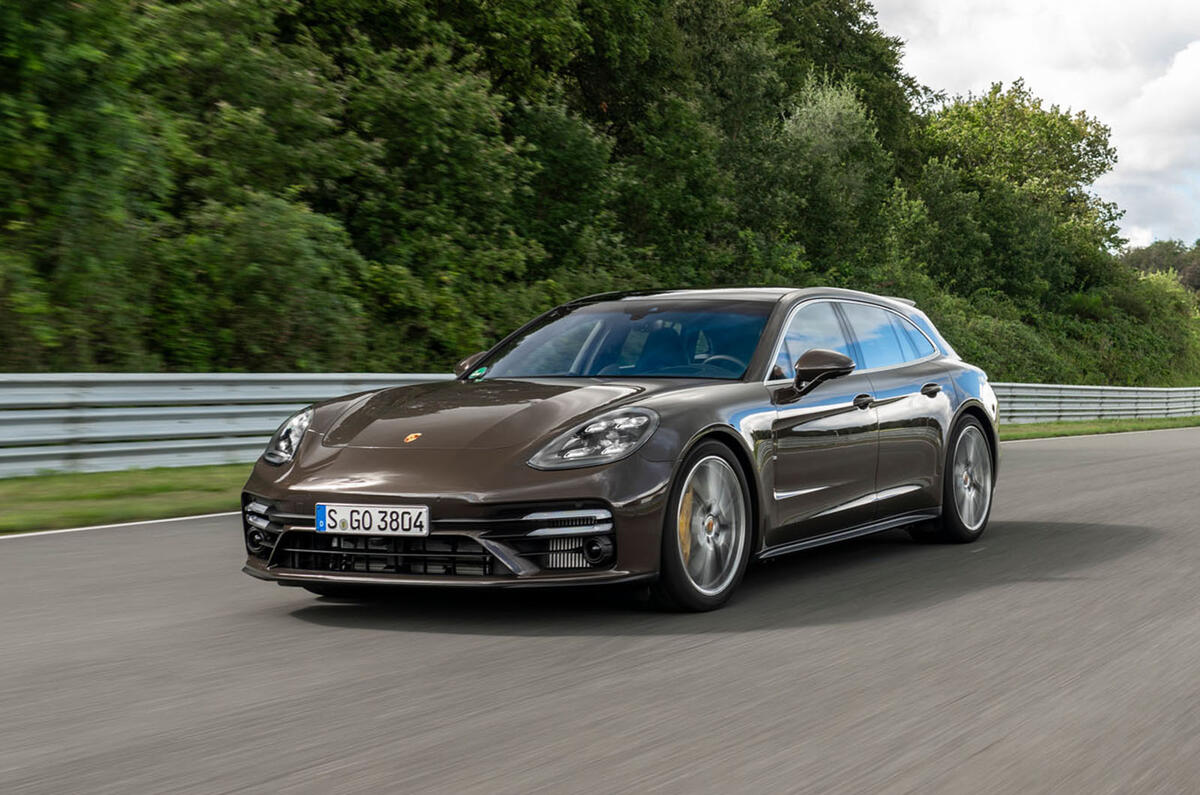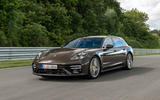What is it?
The competition that has materialized at the expensive end of the market for fast four-door GT cars of late has evidently come as something of a surprise to Porsche. When the company introduced the second-generation Panamera in 2016, 542bhp was considered to be plenty for the Turbo version. Then along came the Mercedes-AMG GT63 S, Audi RS7 Sportback and BMW M8 Competition four-doors, all offering enough grunt to put the ‘big’ Porsche well and truly in the shade – which, needless to say, is not somewhere Porsche is used to being.
That’s not counting the fast-but-heavy, 671bhp, petrol-electric Panamera Turbo S E-Hybrid, of course, which by Weissach’s own admission serves slightly different purposes and tastes than more typical and traditional performance GTs; and, as part of the wider refreshed 2021-model-year Panamera model range, there will be a new top-of-the-range Panamera ‘PHEV’ along in a little while, by the way. For those who like their big, fast executive cars more old school in flavour, however, there is now this: the Panamera Turbo S.
The car uses a quite widely updated version of the ‘EA825’ 4.0-litre twin-turbo V8 that Porsche has been building in Stuttgart for the whole of the VW Group since 2016 – and it’s the first car in the group to benefit from the new crankshaft, pistons, conrods, turbos and fuel injection system that Porsche has just fitted to that engine. Why not just shoehorn a more powerful version of the existing V8, such as the one from the Lamborghini Urus or Audi RS6 Avant, into the Turbo S instead? Well, you couldn’t, apparently. The ‘MSB’ platform the Panamera uses has a tighter engine bay than the ‘MLB-Evo’ layout used by the likes of the Urus, Bentayga, Cayenne and RS6, and it also obliges a twin-clutch rather than torque converter automatic transmission.
Outside of the engine bay, Weissach’s efforts to refine and improve this car’s driving experience are mostly delivered by software retuning. Much was learned about the MSB platform’s three-chamber air suspension and ‘PDCC Sport’ active roll cancellation systems during the development of the all-electric Taycan, and the Panamera gets some inherited electronic gains as a result. It has also been updated with the same four-wheel steering calibration that Porsche’s latest 911 and Taycan sports cars use. Mechanical hardware changes are very few: front suspension and engine mounts are new, but that really is it.













































Join the debate
Add your comment
Over 2100kg's! About as
I like.
I like the dash layout, it's not covered in buttons etc, the gear change is in a nice position and I agree, it isn't a pretty shape but if a six foot plus can sit in the back for an hour or two that helps, and if your paying this much for transport, mpg isn't a real concern, the body color of this car is a bit weird, non descript which didn't help with the look in general,and no, I haven't seen that many either.
140k oversized Porsche estates
I cant remember if Ive ever seen something so big, ugly and expensive. Come to think of it I cant remember the last time I saw one on the road, which is no bad thing.